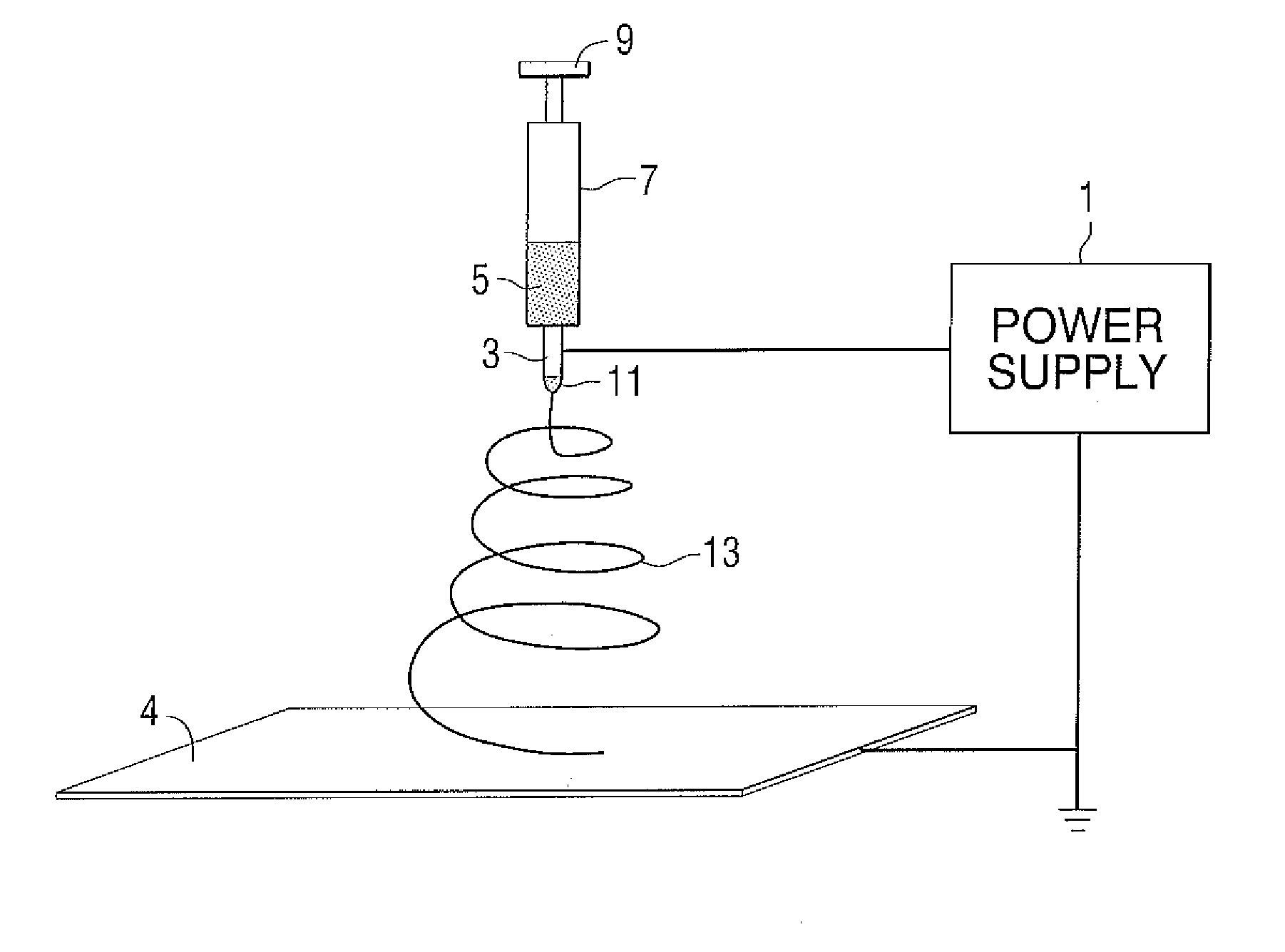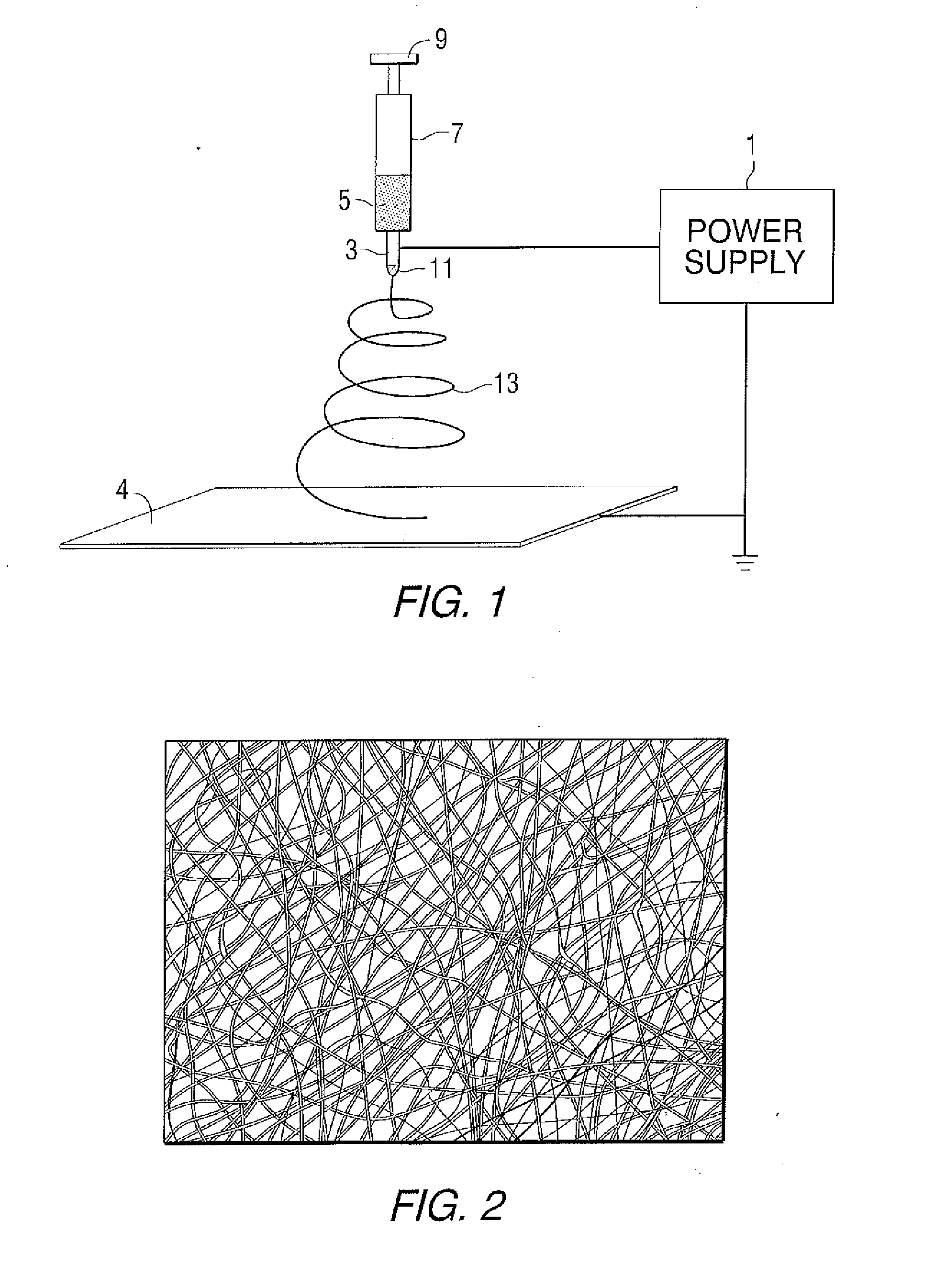Organic-inorganic electrospun fibers
a technology of organic and inorganic fibers, applied in the direction of yarn, printed circuit aspects, transportation and packaging, etc., can solve the problems of thermal expansion of fiber glass, and heat generation of circuit boards both blank and finished circuit boards, so as to minimize distortion and less distortion of copper overlayers
- Summary
- Abstract
- Description
- Claims
- Application Information
AI Technical Summary
Benefits of technology
Problems solved by technology
Method used
Image
Examples
example a
[0042]With reference to Table 1 below, a reaction flask was equipped with a stirrer, thermocouple, nitrogen inlet and a condenser. Charge A was then added and stirred with heat to reflux temperature (75° C.-80° C.) under nitrogen atmosphere. To the refluxing ethanol, Charge B and Charge C were simultaneously added over three hours. The reaction mixture was held at reflux condition for two hours. Charge D was then added over a period of 30 minutes. The reaction mixture was held at reflux condition for two hours and subsequently cooled to 30° C.
TABLE 1Example ACharge A (weight in grams)Ethanol SDA 40B1360.1Charge B (weight in grams)Methyl Methacrylate12.8Acrylic acid8.7Silquest A-1742101.42-hydroxylethylmethacrylate14.5n-Butyl acrylate0.2Acrylamide7.2Ethanol SDA 40B155.7Charge C (weight in grams)Vazo 6736.1Ethanol SDA 40B76.7Charge D (weight in grams)Vazo 671.5Ethanol SDA 40B9.1% Solids17.9Acid value (100% resin solids)51.961Denatured ethyl alcohol, 200 proof, available from Archer Da...
examples 1-4
Example 1
[0043]The acrylic-silane resin solution from Example A (10 grams) was blended with Ethyl Polysilicate (Silbond® 40, 3 grams), polyvinylpyrrolidone (0.1 grams) and water (1.5 grams). The formulation was stored at room temperature for about 7 hours. A portion of the formulation was loaded into a 10 ml syringe and delivered via a syringe pump at a rate of 0.8 milliliters per hour to a spinneret (stainless steel tube 1 / 16-inch outer diameter and 0.010-inch internal diameter). This tube was connected to a grounding aluminum collector via a high voltage source to which about 21 kV potential was applied. The delivery tube and collector were encased in a box that allowed nitrogen purging to maintain a relative humidity of less than 25%. Nanofibers having a diameter of about 2000 nanometers were collected on the grounding aluminum panel and were characterized by optical microscopy and scanning electron microscopy.
example 2
[0044]The acrylic-silane resin solution from Example A (10 grams) was blended with Ethyl Polysilicate (Silbond® 40, 2 grams), polyvinylpyrrolidone (0.1 grams) and water (1.5 grams). The formulation was stored at room temperature for 3.5 hours. A portion of the formulation was loaded into a 10 ml syringe and delivered via a syringe pump at a rate of 1.6 milliliters per hour to the spinneret of Example 1. The conditions for electrospinning were as described in Example 1. Nanofibers having a diameter of about 400 nanometers were collected on the grounding aluminum panels and were characterized by optical microscopy and scanning electron microscopy.
PUM
| Property | Measurement | Unit |
|---|---|---|
| Fraction | aaaaa | aaaaa |
| Fraction | aaaaa | aaaaa |
| Fraction | aaaaa | aaaaa |
Abstract
Description
Claims
Application Information
 Login to View More
Login to View More - R&D
- Intellectual Property
- Life Sciences
- Materials
- Tech Scout
- Unparalleled Data Quality
- Higher Quality Content
- 60% Fewer Hallucinations
Browse by: Latest US Patents, China's latest patents, Technical Efficacy Thesaurus, Application Domain, Technology Topic, Popular Technical Reports.
© 2025 PatSnap. All rights reserved.Legal|Privacy policy|Modern Slavery Act Transparency Statement|Sitemap|About US| Contact US: help@patsnap.com



